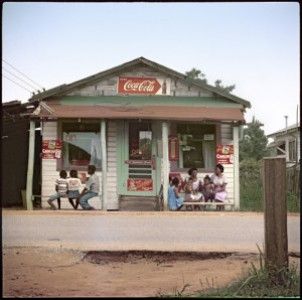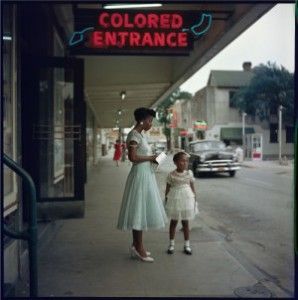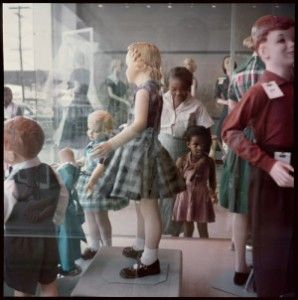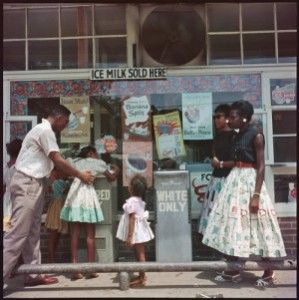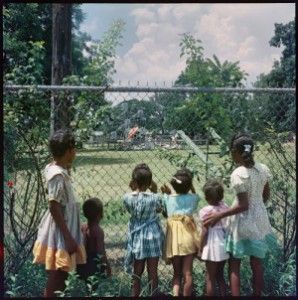Gordon Parks: Segregation Story
October 1 - December 11, 2016
Yarbrough Gallery
On September 24, 1956, against the backdrop of the Montgomery bus boycott, Life magazine published a photo essay titled “The Restraints: Open and Hidden.” Staff photographer Gordon Parks had traveled to Mobile and Shady Grove, Alabama, to document the lives of the related Thornton, Causey, and Tanner families in the “Jim Crow” South. As the Civil Rights Movement began to gain momentum, Parks chose to focus on the activities of everyday life in these African- American families – Sunday shopping, children playing, doing laundry – over-dramatic demonstrations. Guest curated by Columbus Staten University students, Gordon Parks – Segregation Story features 12 photographs from “The Restraints,” now in the collection of the Do Good Fund, a Columbus-based nonprofit that lends its collection of contemporary Southern photography to a variety of museums, nonprofit galleries, and non-traditional venues. Students’ reflections, enhanced by a research trip to Mobile, offer contemporary thoughts on works that were purposely designed to present ordinary people quietly struggling against discrimination. As the readers of Lifeconfronted social inequality in their weekly magazine, Parks subtly exposed segregation’s damaging effects while challenging racial stereotypes.
One of the most important photographers of the 20th century, Gordon Parks documented contemporary society, focusing on poverty, urban life, and civil rights. The youngest of 15 children, Parks was born in 1912 in Fort Scott, Kansas, to tenant farmers. On his own, at the age of 15 after his mother’s death, Parks left high school to find work in the upper Midwest. In 1939, while working as a waiter on a train, a photo essay about migrant workers in a discarded magazine caught his attention. He purchased a used camera in a pawn shop, and soon his photographs were on display in a camera shop in downtown Minneapolis.
The Farm Security Administration, a New Deal agency, hired him to document workers’ lives before Parks became the first African-American photographer on the staff of Life magazine in 1948, producing stunning photojournalistic essays for two decades. Parks also wrote books, including the semi-autobiographical novel The Learning Tree, and his helming of the film adaptation made him the first African-American director of a motion picture released by a major studio. Parks later directed Shaft and co-founded Essence magazine.
This exhibit is generously sponsored by Mr. Alan F. Rothschild, Jr. through the Fort Trustee Fund, CFCV.

